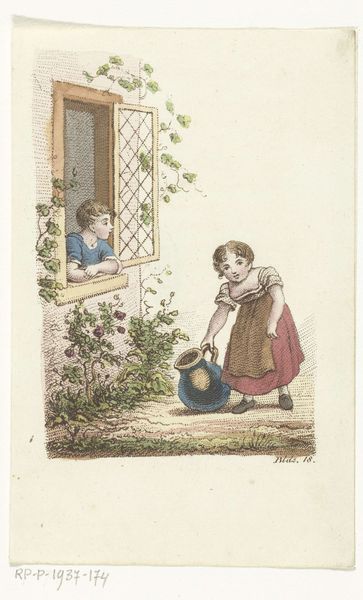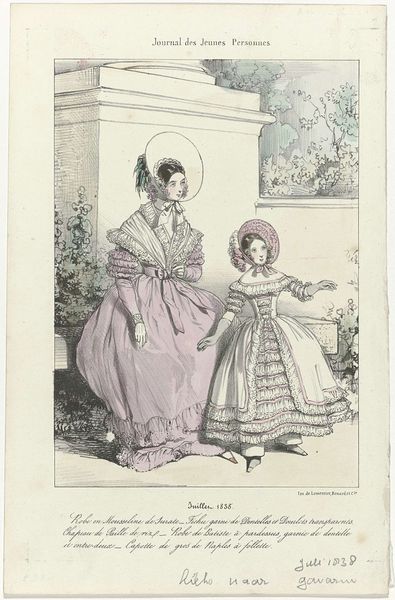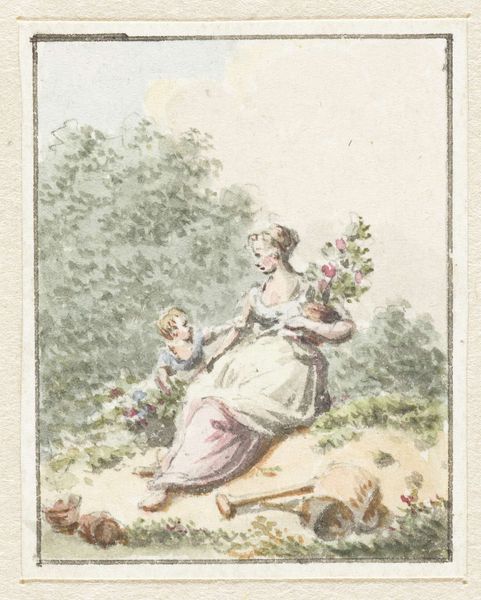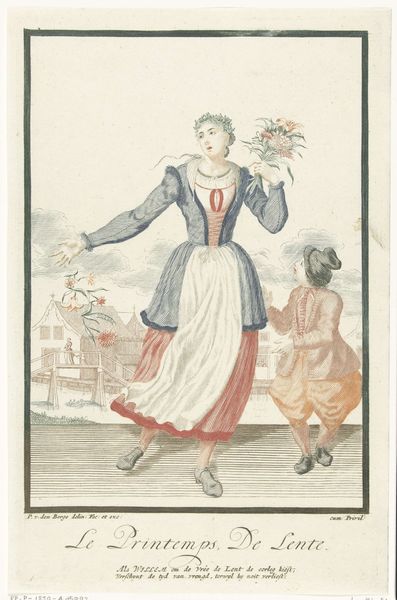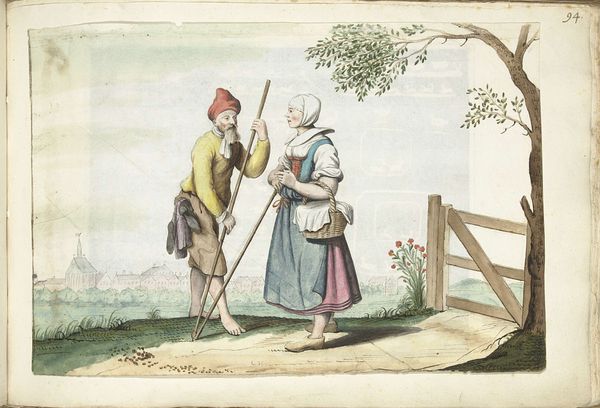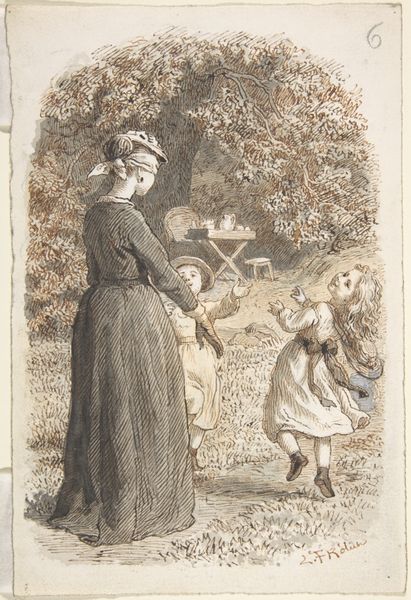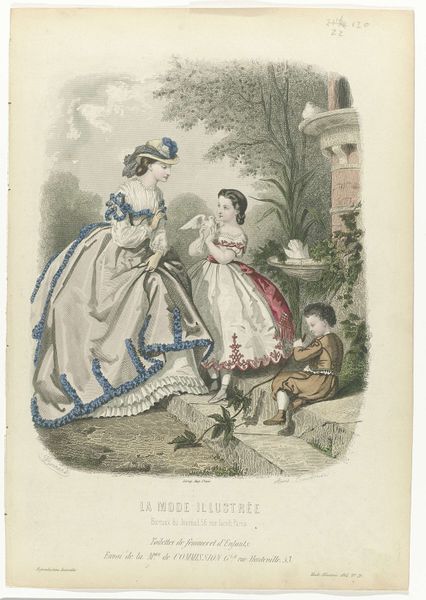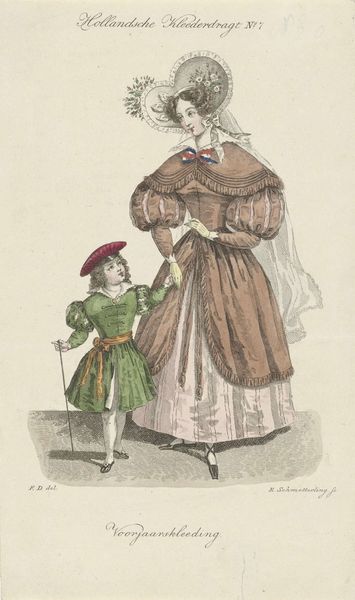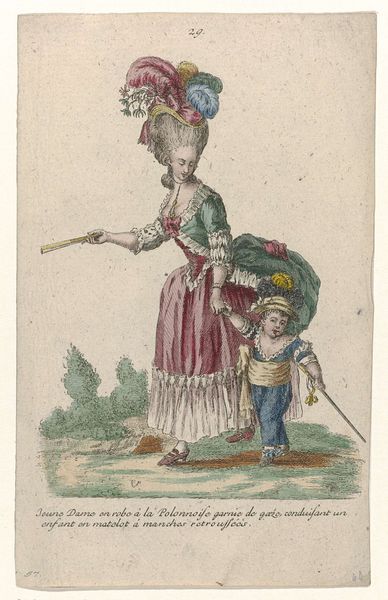
drawing, watercolor
#
landscape illustration sketch
#
drawing
#
light pencil work
#
pencil sketch
#
landscape
#
botanical illustration
#
figuration
#
personal sketchbook
#
watercolor
#
romanticism
#
botanical drawing
#
sketchbook drawing
#
watercolour illustration
#
genre-painting
#
sketchbook art
#
botanical art
Dimensions: height 134 mm, width 87 mm
Copyright: Rijks Museum: Open Domain
Curator: Here we have “Maria gaat met vrouw op pad” from sometime between 1807 and 1823 by Johannes Alexander Rudolf Best. It’s executed in both watercolor and drawing. Editor: My first impression is one of curious unease. The figures feel somewhat stiff, almost posed, despite ostensibly being caught in a moment of rural passage. Curator: Indeed. And if we dig into the historical context, we see a fascinating intersection of class and gender dynamics at play. Consider the title— "Maria goes out with [a] woman"— it invites questions about their relationship. Are they equals? Employer and servant? What social scripts dictate their interaction within this space? Editor: The body language of the figures lends itself to that reading as well. The woman, in what I’d read as slightly more refined dress, gestures authoritatively, while Maria seems to defer, mirroring her pose near the gate. The gate itself becomes symbolic. Curator: Exactly! The gate acts as a liminal space, defining boundaries between cultivated space and, presumably, wilderness. This also serves as a space to consider how societal expectations and limitations affect both figures and particularly the access Maria is granted. Editor: I am struck, too, by the relatively muted palette. There is very little saturated colour. That also echoes with the lack of apparent activity. This adds to a restrained quality to what is supposedly an open, natural scene. Curator: Absolutely, the colour palette is far from the idealized vibrant landscapes of its contemporaries, and I suggest that is an important deviation, a way that the social becomes firmly embedded and maybe even clashes with ideas about liberation inherent to experiencing “nature”. Editor: This also offers us a glimpse into the restricted lives that so many women lead. We are led to speculate that a trip outdoors in their time becomes not only meaningful for them, but as art can communicate some of their deeper experiences, also important for us as viewers today. Curator: I've definitely re-evaluated my initial thoughts regarding nature versus nurture. Thank you for pulling me in directions towards hidden, underlying meaning. Editor: It's a pleasure to think through a work like this, highlighting these tensions of everyday social landscapes of early 19th century in that subtle light.
Comments
No comments
Be the first to comment and join the conversation on the ultimate creative platform.
